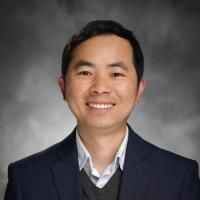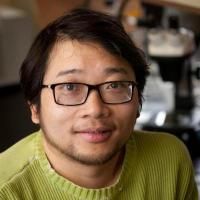Antagonizing the irreversible thrombomodulin-initiated proteolytic signaling alleviates age-related liver fibrosis via senescent cell killing.
Date
2023-07
Journal Title
Journal ISSN
Volume Title
Repository Usage Stats
views
downloads
Citation Stats
Attention Stats
Abstract
Cellular senescence is a stress-induced, stable cell cycle arrest phenotype which generates a pro-inflammatory microenvironment, leading to chronic inflammation and age-associated diseases. Determining the fundamental molecular pathways driving senescence instead of apoptosis could enable the identification of senolytic agents to restore tissue homeostasis. Here, we identify thrombomodulin (THBD) signaling as a key molecular determinant of the senescent cell fate. Although normally restricted to endothelial cells, THBD is rapidly upregulated and maintained throughout all phases of the senescence program in aged mammalian tissues and in senescent cell models. Mechanistically, THBD activates a proteolytic feed-forward signaling pathway by stabilizing a multi-protein complex in early endosomes, thus forming a molecular basis for the irreversibility of the senescence program and ensuring senescent cell viability. Therapeutically, THBD signaling depletion or inhibition using vorapaxar, an FDA-approved drug, effectively ablates senescent cells and restores tissue homeostasis in liver fibrosis models. Collectively, these results uncover proteolytic THBD signaling as a conserved pro-survival pathway essential for senescent cell viability, thus providing a pharmacologically exploitable senolytic target for senescence-associated diseases.
Type
Department
Description
Provenance
Subjects
Citation
Permalink
Published Version (Please cite this version)
Publication Info
Pan, Christopher C, Raquel Maeso-Díaz, Tylor R Lewis, Kun Xiang, Lianmei Tan, Yaosi Liang, Liuyang Wang, Fengrui Yang, et al. (2023). Antagonizing the irreversible thrombomodulin-initiated proteolytic signaling alleviates age-related liver fibrosis via senescent cell killing. Cell research, 33(7). pp. 516–532. 10.1038/s41422-023-00820-4 Retrieved from https://hdl.handle.net/10161/29453.
This is constructed from limited available data and may be imprecise. To cite this article, please review & use the official citation provided by the journal.
Collections
Scholars@Duke

Liuyang Wang
Leveraging bioinformatics and big data to understand the intricacies of human diseases.
My overall research goals are centered on unraveling the molecular mechanism underpinning human disease susceptibility and harnessing these findings to innovative diagnostic and therapeutic strategies. I have adopted a multidisciplinary approach that integrates genomics, transcriptomics, and computational biology. Leveraging high-throughput cellular screening and genome-wide association study (GWAS), we have successfully identified hundreds of genomic loci associated with 8 different pathogens (Wang et al. 2018). Utilizing single-cell RNA-seq, we developed scHi-HOST to rapidly identify host genes associated with the influenza virus (Schott and Wang, et al. 2022). I also have developed several novel statistical tools, CPAG and iCPAGdb, that estimate genetic associations among human diseases and traits (Wang et al. 2015, 2021). Combining experimental and computational approaches, I expect to gain a deeper understanding of the genetic architecture of human susceptibility to infection and inflammatory disorders.

Kuo Du

Vadim Y Arshavsky
The Biology and Pathophysiology of Vertebrate Photoreceptor Cells
Research conducted in our laboratory is dedicated to understanding how vision is performed on the molecular level. Most of our work is centered on vertebrate photoreceptor cells, which are sensory neurons responsible for light detection in the eye. Photoreceptors capture photons, produce an electrical signal, and transmit this information to the secondary neurons in the retina, and ultimately to the brain, through modulation of their synaptic release.
The main experimental direction of our laboratory is to elucidate the cellular processes responsible for building the light-sensitive organelle of photoreceptor cells, called the outer segment, and for populating this organelle with proteins supporting its structure and conducting visual signaling. Of particular interest is the mechanism by which outer segments form their “disc” membrane stacks providing vast membrane surfaces for efficient photon capture. Outer segment membranes are continuously renewed throughout the lifetime of a photoreceptor, with new discs added to the outer segment base and old discs phagocytosed at the tip by the retinal pigment epithelium. As a result, the entire mammalian outer segment is replaced with new discs over the course of 8-10 days. One of the central goals of our current studies is to elucidate the signaling pathway that acts as a “control center” to initiate the formation of each new disc with the strikingly regular frequency of approximately 80 times per day.
Our second major research direction explores a connection between understanding the basic function of rods and cones and practical, translational ideas aiming to ameliorate retinal degeneration caused by mutations in critical photoreceptor-specific proteins. Several years ago, we found that photoreceptors bearing a broad spectrum of disease-associated mutations suffer from a common cellular stress factor, proteasomal overload, i.e. insufficient ability of the ubiquitin-proteasome system to process misfolded and/or mislocalized proteins produced in these cells. Our more recent data demonstrate that the enhancement of protein degradation machinery in these cells causes a remarkable delay in the progression of photoreceptor degeneration. We continue investigating photoreceptor proteostasis in further mechanistic depth and seek optimal strategies to employ proteasomal activation as a means to ameliorate or cure inherited blindness.
During our studies, we explore high-end applications of mass spectrometry-based proteomics and were the first laboratory adopting several advanced proteomic approaches to vision research. Of particular significance are the applications of so-called “label-free” quantitative proteomics for simultaneous elucidation of multiple protein distributions among different compartments of the photoreceptor cells and for identification of unique protein components of various photoreceptor membranes. Using label-free proteomics, we demonstrated that a small protein PRCD (progressive rod and cone degeneration) is a unique component of photoreceptor discs and subsequently identified several novel unique components of the plasma membrane enclosing the rod outer segment. Most recently, we adopted a highly efficient and accurate methodology for simultaneous absolute quantification of several dozen proteins, termed MS Western. This method allowed us to determine the precise molar ratio amongst all major functional and structural proteins residing in the light-sensitive outer segments of photoreceptor cells.

Qi-Jing Li
Recent clinical success in cancer immunotherapy, including immune checkpoint blockades and chimeric antigen receptor T cells, have settled a long-debated question in the field: whether tumors can be recognized and eliminated by our own immune system, specifically, the T lymphocyte. Meanwhile, current limitations of these advanced treatments pinpoint fundamental knowledge deficits in basic T cell biology, especially in the context of tumor-carrying patients. Aiming to develop new immunotherapies against cancers, and interconnected with clinical trials executed by clinician collaborators and immunogenomic tools developed in house, my research program rests on three pillars – the T cell, the Tumor Microenvironment, and Immunotherapy.
We regard the tumor as an acquired immunosuppressive organ. By this scientific precept, we study how tumors inhibit T cell-mediated immunity both locally and systemically. Our early TCR repertoire profiling of gastric tumors and tumor-free patient mucosa revealed the correlation between tissue resident T cell diversity and patient survival. Our recent single cell RNA sequencing study depicted complex pathways to develop T cell memory intratumorally. Currently, aided by bioinformatics and animal models, we are actively dissecting signaling pathways, transcription regulatory networks, and epigenetic programs governing T cell differentiation in the tumor microenvironment. Moving beyond the local microenvironment, our previous studies also demonstrated that tumors remotely modulate T cell antigen-priming events in the spleen. This ongoing in-depth investigation has gradually unveiled the profound impact of this “tele-education”: established tumors hijack hematopoiesis to protect themselves against T cell surveillance. The next step is to identify those evil envoys sent out by tumors carrying signals for systemic immune suppression.
The expanding boundary of T cell biology is the frontier of cancer immunotherapy. The contrast between the unprecedented success of T cell-based therapies for blood malignancies and their repeated failures against solid tumors vividly highlights our prevalent challenges: to understand how T cells can infiltrate tumors; how infiltrated T cells can resist microenvironmental suppression; and how activated T cells can form persistent memory to restrict tumor development and metastasis. During the last decade, my laboratory invested heavily in the microRNA (miRNA) field, deeming miRNAs a unique tool for T cell biology discovery. Identifying miRNA functions and targets is our path to discovering novel proteins, or novel functions of known proteins, in T cell regulation. Expression profiling and functional screening in the lab have produced many candidates to make T cells smarter and stronger. Due to their size, these miRNA candidates can be easily combined with targeting moieties to armor T cells, and we have incorporated these small weaponries, and introduced genomic manipulations on their downstream targets, into CAR-T cells for pre-clinical studies. Indeed, some of them greatly enhance CAR-T’s anti-tumor function. As a general principle, we believe that it is necessary to empower transferred CAR T or TCR-T cells with enhanced functionality against solid tumors. We also believe the T cell is a perfect platform to integrate genomic engineering for combinatory cancer therapy. Currently, we are actively involved in three such armored CAR-T or TCR-T trials for various solid tumor treatments.
Accompanying these trials, and other immunotherapies carried out by colleagues on campus and world-wide, we design and execute comprehensive immune monitoring procedures to rationalize successes and failures. Clinical observations are smoothly deconstructed into basic but intriguing T cell questions for us to answer, and answers generated on the bench directly inform T cell designs in future trials. This is our closed circle of research and day-to-day operation.

Anna Mae Diehl
Our lab has a long standing interest in liver injury and repair. To learn more about the mechanisms that regulate this process, we study cultured cells, animal models of acute and chronic liver damage and samples from patients with various types of liver disease. Our group also conducts clinical trials in patients with chronic liver disease. We are particularly interested in fatty liver diseases, such as alcoholic fatty liver disease and nonalcoholic fatty liver disease (NAFLD).
Research by our group has advanced understanding in two main areas: 1) immune system regulation of liver injury and regeneration and 2)the role of fetal morphogens, such as the hedgehog pathway, in regulating fibrotic responses to liver damage. Our basic research programs have been enjoyed continuous NIH support since 1989. We welcome students, post-doctoral fellows and visiting scientists who have interests in this research area to contact us about training opportunities and potential collaborations.
Since 2001 we have also been an active participant in the NIDDK-funded Nonalcoholic Steatohepatitis Clinical Research Network (NASH CRN), a national consortium comprised of 8 university medical centers selected to generate a national registry for patients with NAFLD and to conduct multicenter treatment trials for this disorder. We are actively recruiting patients for this program, as well as a number of other industry-supported NAFLD studies.

Xiao-Fan Wang
The current research in the Wang laboratory mainly focuses on the elucidation of molecular nature and signaling mechanisms associated with the initiation of cellular senescence. In addition, we continue to study changes in tumor microenvironment that promotes tumor progression and metastasis, particularly how tumor cells interact with the immune system. Ultimately, we hope that our studies in these areas to lead to the development of novel therapeutics for the treatment of various types of human cancer.
Unless otherwise indicated, scholarly articles published by Duke faculty members are made available here with a CC-BY-NC (Creative Commons Attribution Non-Commercial) license, as enabled by the Duke Open Access Policy. If you wish to use the materials in ways not already permitted under CC-BY-NC, please consult the copyright owner. Other materials are made available here through the author’s grant of a non-exclusive license to make their work openly accessible.
